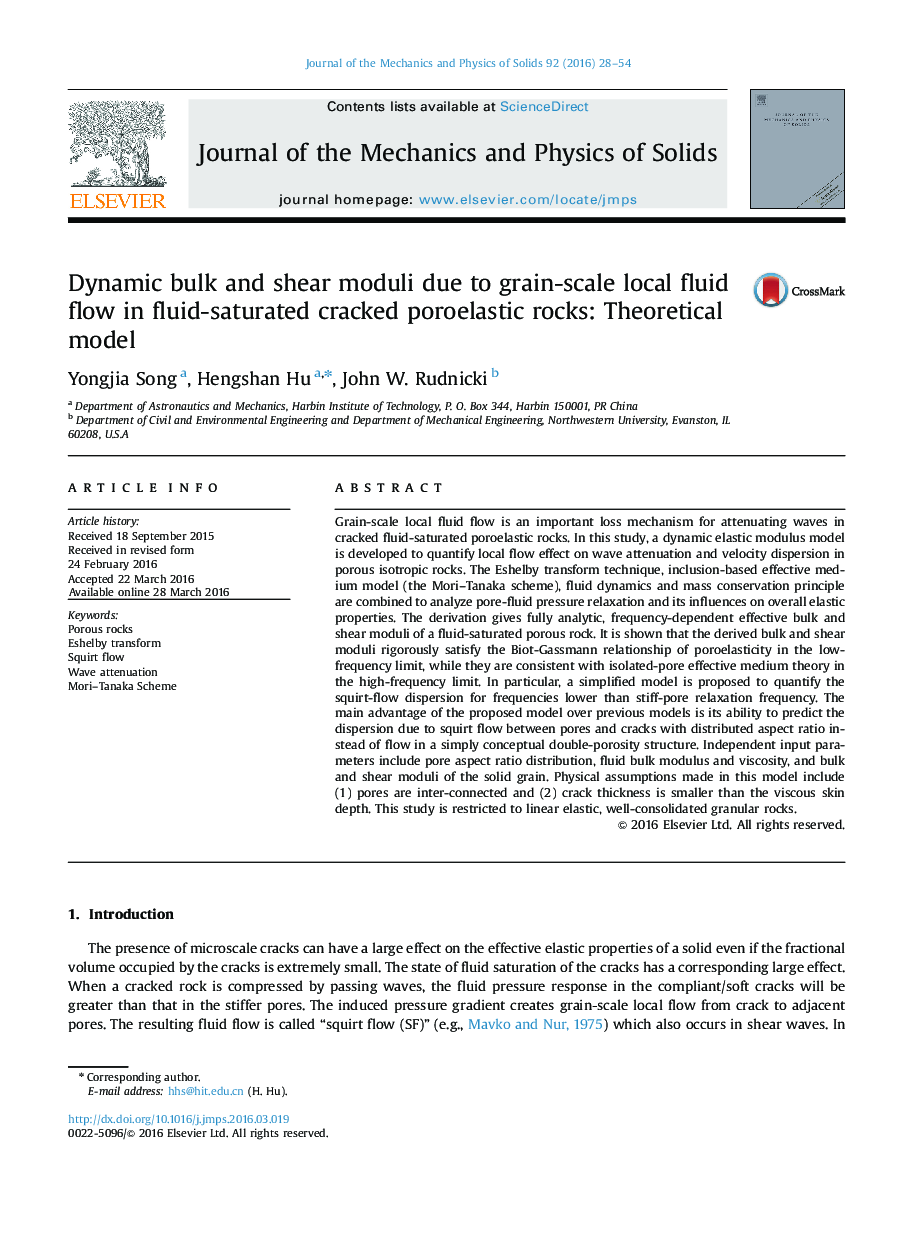| Article ID | Journal | Published Year | Pages | File Type |
|---|---|---|---|---|
| 7177736 | Journal of the Mechanics and Physics of Solids | 2016 | 27 Pages |
Abstract
Grain-scale local fluid flow is an important loss mechanism for attenuating waves in cracked fluid-saturated poroelastic rocks. In this study, a dynamic elastic modulus model is developed to quantify local flow effect on wave attenuation and velocity dispersion in porous isotropic rocks. The Eshelby transform technique, inclusion-based effective medium model (the Mori-Tanaka scheme), fluid dynamics and mass conservation principle are combined to analyze pore-fluid pressure relaxation and its influences on overall elastic properties. The derivation gives fully analytic, frequency-dependent effective bulk and shear moduli of a fluid-saturated porous rock. It is shown that the derived bulk and shear moduli rigorously satisfy the Biot-Gassmann relationship of poroelasticity in the low-frequency limit, while they are consistent with isolated-pore effective medium theory in the high-frequency limit. In particular, a simplified model is proposed to quantify the squirt-flow dispersion for frequencies lower than stiff-pore relaxation frequency. The main advantage of the proposed model over previous models is its ability to predict the dispersion due to squirt flow between pores and cracks with distributed aspect ratio instead of flow in a simply conceptual double-porosity structure. Independent input parameters include pore aspect ratio distribution, fluid bulk modulus and viscosity, and bulk and shear moduli of the solid grain. Physical assumptions made in this model include (1) pores are inter-connected and (2) crack thickness is smaller than the viscous skin depth. This study is restricted to linear elastic, well-consolidated granular rocks.
Keywords
Related Topics
Physical Sciences and Engineering
Engineering
Mechanical Engineering
Authors
Yongjia Song, Hengshan Hu, John W. Rudnicki,
